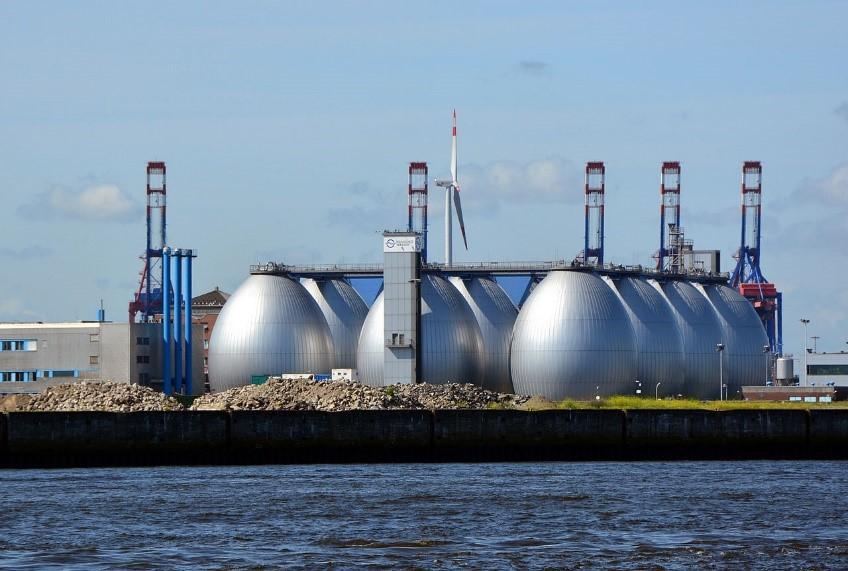Nutrient recovery
Sewage sludge is the residual, semi-solid material produced as a by-product of wastewater treatment. This sludge contains metals and microplastics, as well as pathogenic organisms such as viruses and bacteria. Sludge is, however, also rich in nutrients, such as nitrogen and phosphorus, which originate from human waste, food and certain soaps and detergents. And both of these nutrients are valuable in agriculture as components of fertilisers.
In urban areas with a lack of advanced wastewater treatment services, the high concentration of these nutrients causes pollution. Excess nitrogen and phosphorus are still a leading cause of water quality degradation in Europe. This makes an even stronger case for nutrient recovery from wastewater.
The phosphorus crisis
You might not hear about it a lot, but phosphorus is an element essential to sustaining life on the planet. Why? Because it’s necessary to produce our food. Phosphorus, in its phosphate form, is needed to fertilise the soil. But we are running out of it. Extractable phosphorus mineral resources are predicted to become scarce or even exhausted in the next 50 to 100 years. At the same time, we are wasting so much of it that it pollutes our waters.
This is why phosphorus recovery is so important. Just by recycling the world’s domestic wastewater, we could meet 22% of the global phosphorus demand. Driven by the expected future shortages, an interest in phosphorus recovery from wastewater has led to extensive research in the field. These technologies are already being used at several locations. The world’s largest nutrient recovery facility operates close to Chicago in the United States. Its phosphorus recovery system can recover more than 85% of the phosphorus and up to 15% of the nitrogen from wastewater streams.
The nitrogen cycle
Unlike phosphorus, which is a limited and non-renewable resource, nitrogen is abundantly present in the atmosphere. Ever since the invention of the Haber-Bosch process in 1909, which managed to convert atmospheric nitrogen to ammonia, nitrogen-based fertilisers have supported the largest historical increase in food production capacity.
The increased food production achieved by the use of these fertilisers has resulted in nitrogen finding its way into our wastewater in record amounts. Which is why wastewater treatment plants need to employ energy intensive methods to remove nitrogen.
The method used to remove nitrogen from wastewater also results in the formation of nitrous oxide, which is a greenhouse gas. However, recovering nitrogen fully instead of just removing it takes care of that problem – not only contributing to the circular economy, but also reducing greenhouse gas emissions. Unfortunately, current technologies only allow for 5-15% of that nitrogen to be recovered. This alongsideits abundance in the atmosphere also poses a commercial challenge.
Making reclamation profitable
Technology is advancing, but not enough to be profitable and business opportunities remain limited. The low nutrient content in biosolids, in particular nitrogen, does not allow for profitable sale on the market. Only 5–15% of the available nitrogen in wastewater can be recovered, while it is possible to capture 45–90% of phosphorus.
Scientists and engineers are also considering a list of other under-exploited resources in wastewater, including bioplastics, enzymes, metals, and minerals, but more work is needed to make their reclamation economically viable.
Energy recovery
The wastewater treatment industry consumes large amounts of energy, accounting for approximately 0.8% of the entire electricity generated in the European Union. But studies have shown that wastewater contains nearly five times the amount of energy that is needed for the wastewater treatment process. This mean that wastewater treatment facilities are able not only to produce the energy they need, but also to help heat and power the cities that produce the wastewater, thus decarbonising the economy.
Advanced facilities typically recover only chemical energy in the form of biogas, which is produced from the anaerobic digestion of wastewater sludge. Biogas is one of the most important renewable energy sources. It does not rely on critical raw materials and does not disrupt wildlife. In addition, can be stored and distributed using the existing gas infrastructure network.
Research into recoverable energy embedded in municipal wastewater, however, suggests that the potential for thermal energy (80% of energy recovered) is much higher than that for chemical energy (20%). Only a very small amount (<1%) of the embedded energy is in the form of hydraulic energy. This indicates that a significant portion of energy that could be recovered from wastewater currently remains unexploited.
Hot and cold
Thermal energy from wastewater, recovered through technologies such as heat exchangers and heat pumps, can be used for district heating/cooling, agricultural greenhouses, and even for drying sludge. This is because wastewater exhibits a relatively high temperature, as it originates from warm sources such as showers, dishwashers and washing machines.
There are no technological limitations to the recovery and use of thermal energy from wastewater. Difficulties recovering it are attributed to the distance of the supply from wastewater plants. To utilise this thermal energy fully, authorities need to include it in municipal planning.

